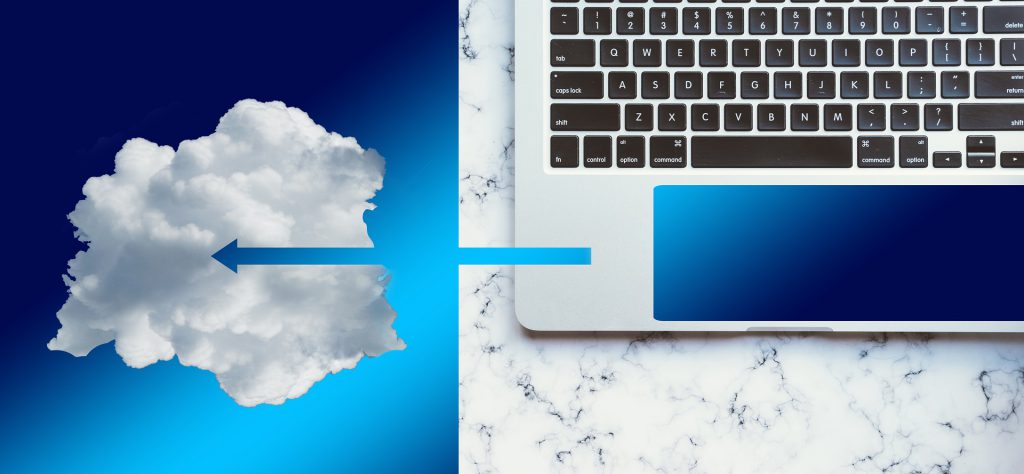Using the Stencil for WordPress Plugin
[cleveryoutube video=”bkzrBUN8Bys” style=”2″ pic=”https://www.suzannesfarmer.com/wp-content/uploads/2019/03/Stencil-for-WordPress-Plugin_YT-Thumbnail.png”]Download the Stencil for WordPress Plugin
Use coupon code “SUZANNE” to get 10% off your paid account.
Here’s the blog post I created in the video: Setting Healthy Boundaries in Your Business and Personal Life
If this video was helpful, be sure to let me know in the comments (below the bio box, and let the three little dots load first! 
Cloud Storage vs Cloud Backup

Cloud Storage vs Cloud Backup

Have you ever lost data because your hard drive died, as in it went completely kaput? Lemme tell you, it’s PAINFUL. Several years ago, I was looking for a document on my hard drive. Mid-lookup, the hard drive stopped working. I figured it would come back. Long story short, after days of trying to get it back up and taking it to a repair and restoration place, I wasn’t able to get all my data back.
The 3-2-1 Backup Method

The 3-2-1 Backup Method
I’ll never forget my first big data loss. The laptop that I had been using for several years gave out after months of grinding and other noises. Because the hard drive had seized up, there was no recovering the data… years and years of articles that I had written for one of the local newspapers, a recollection of Christmases in my home country of Jamaica, and many other documents were lost forever.
How to Design Your Sale Page Images
When it comes to your sales page, you can have amazing headlines and great copy. If you don’t have pictures of your product, though, it can be hard to convert visitors into buyers. Most prospects need to see your product before they can visualize how it will improve their life or business.
This can create a problem for digital marketers. You may even wonder how you’re expected to provide pictures of a product that’s really just a string of zeros and ones. Fortunately, there are a few good workarounds to this problem. Here’s how to create images that will help you sell your product…
Use a 3D Image Creator
One of the easiest ways to add images to your sales page is to experiment with a 3D image creator. These creators usually work well because the 3D nature of the image makes the customer feel like they’re buying a “real” product instead of a digital one.
There are a variety of 3D cover creators online. But two of the most popular options are eCover Authority and Boxshot King. You can import a product image you’ve already created and add it to one of the 3D models. You can also use the software to create the entire cover, depending on how much experience you have with graphic design.
Embrace the Mockups
You’ve probably seen a mockup online even if you didn’t recognize it at the time. A mockup is an image that shows a product, app, or website in a real life situation. For example, there are mockup photos of a model holding a smart phone. When using a mockup creator, you can choose what appears on the phone’s screen. This makes it look like a real person is using your product.
There are plenty of free and paid mockup creators online. Magic Mockups lets you upload your own free for personal or commercial use. Smart Mockup offers a free and premium mockup tool, depending on what images you need.
Try Screenshot Tools
Another way to show off your products is to use screenshot software. This can be helpful if you have a product that has a lot of content you want to showcase. For example, if you’ve written a lengthy eBook you can use screenshot software to take a picture of all your pages and combine them into one neat image.
You can find both free and paid screenshot tools. The basic ones will take a picture of what’s on your screen and allow you to add text and highlights to your image. More advanced ones like SnagIt allow you to customize the image with arrows, callouts, blurring, and more.
You don’t have to have dozens of images on your sales page. A few high-resolution images that look great on both desktop and mobile devices will usually convince your visitors to click that buy button.
7 Essential Elements of a Great Sales Page
Mariah was excited about the course she had created for the community of moms she served. She was passionate about the course curriculum, and she knew it could help her customers. She just had one sticking point…she was having some trouble with writing her sales page.
After struggling with it for a while, she asked her mentor for some ideas. Her mentor shared that every sales page has several important elements. If you use these elements, you’re more likely to convince visitors to make a purchase. Here are the most important elements for a sales page:
A Compelling Headline
At the top of your sales page, you’ll need a compelling headline. The job of this headline is to encourage your visitors to read the rest of the sales page. To create a headline, focus on what your customers are getting. For example, if you’re selling graphic design software, then you might use a headline like: Design Your Own Logos, Banners, and Posters in 5 Minutes!
A bold promise like this can be very effective. But keep in mind that your headline must be true. Don’t promise to teach someone everything about PhotoShop in 5 minutes. They’ll either be disappointed when you can’t deliver or they’ll recognize the headline for a lie and move on.
A Fascinating Lead
There’s an expression that editors and publishers frequently tell writers, “Don’t bury the lead.” What this is means is that you should put the most important information at the very top of your content. It’s good advice for writing a sales page, too.
When you’re writing the first paragraphs of your sales page, consider what your potential customer might want to know most. For example, you’ve created a course on designing with PhotoShop. So your lead should be focused on how quick and easy learning this software can be.
Benefit-Driven Subheadings
So, you have a compelling headline and a fascinating lead; now get ready to add benefit-driven subheadings to your page. Subheadings are important because once a potential customer sees your offer, she’ll scan the rest of your page.
She’s looking to learn more but she may not take the time to read all of your text. She wants the highlights of your product and the best way to provide them is to have descriptive subheadlines. For example, if you’re releasing a course on web design, your subheadings might include:
- 21+ Design Templates Are Included for Your Use
- Find High-Paying Web Design Clients with the Client-Getting Guide
- Network with Industry Professionals in my Exclusive Web Design Group
All of these subheadings promise benefits beyond the product. They appeal to what your potential customers want—simple, easy web design projects and the chance to network with other designers.
When it comes to your sales page, don’t be afraid to take your time. Think about the results your visitor truly wants and show them how your product can get them those results. If you do this well, you’ll be more likely to convert your visitor into a life-long customer.
Clear and Concise Call to Action (CTA)
Every sales page should have a clear and concise call to action to buy the product, enroll in the coaching program or course, or to somehow invest in the product being sold on the page. What you are offering, as well as what you want the person to do, should be obvious.
Bullet Points
A well-written sales letter will show off the product’s features as well as the benefits of those features (the two work best in tandem). Bullets allow you to summarize these points, and serve as subheadings. They also allow you to squeeze in lots of information into tiny spaces.
Graphics
A sales page will often benefit from some kind of graphics – whether they are screenshots, images or even memes. The saying “A picture is worth a thousand words” is often repeated because it works. Graphics help to break up text and to drive home points that can be hard to be expressed, or that would take much longer, in text form. You should also try to have a graphical representation of your product on your sales page, which helps buyers to visualize the product, bringing them closer to the purchase. Be sure to use graphics judiciously, where they make sense.
No Outside Leaks
Some people put their sales pages on a regular blog page, which can distract the prospective buyer. Your sales page should be on a blank page that is not set up like the regular pages on your blog website, and there should be no option on the page except to buy the product or to leave.
If you have links on your sales page to other pages on your website, it can distract the visitor and cause the person to start clicking on the various links, which will tend to lose the sale for you.
CTA: Learn how to design your sales page images when you download your free workbook!